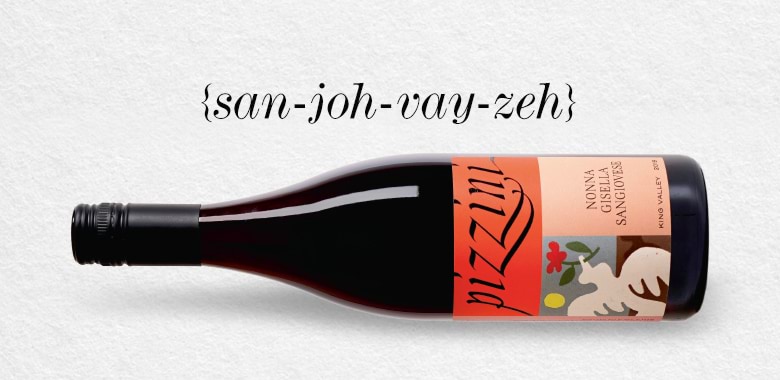
Wine
What is Sangiovese?
It’s Italy’s most widely planted red grape variety, but Sangiovese is also turning heads among Australian winemakers and wine-lovers, and for good reason – it’s delicious, grows well in many Australian wine regions, and is fantastic with food!
The name Sangiovese comes from a Latin term meaning “the blood of Jove”, fuelling theories it has been around since Roman times. Though on first glance it may seem challenging, the pronunciation of Sangiovese is easier than it looks – san-joh-vay-zeh. Say it a few times and it will be rolling off your tongue in no time.
Here we take a deep dive to give you the details on this popular, food-friendly red wine varietal and answer some common questions, from ‘what is Sangiovese similar to?’ and ‘what does Sangiovese taste like?’ to ‘do you chill Sangiovese?’ and ‘why is Sangiovese so popular?’
Shop Sangiovese
AN INFOGRAPHIC GUIDE OF SANGIOVESE
Sangiovese wine has been around since Roman times and is an Italian varietal found in Tuscany's wine region, Chianti.
Sangiovese pairs well with rustic foods such as tomato based dishes and pizza.
Sangiovese can be cellared for up to ten years.
Sangiovese is a mid-weight wine with firm tannins.
Where is Sangiovese from?
Sangiovese is the famed grape of Tuscany and is responsible for some of the most revered and celebrated red wines in Italy. Wines such as Brunello de Montalcino, Vino Nobile de Montepulciano and the renowned Chianti wines (think the wicker-bound bottles that spend their afterlife as candle holders) are all made from Sangiovese.
Other than Tuscany, Sangiovese is widely planted in Lazio, Umbria, Marche and Corsica, where it is known as Nielluccio.

Sangiovese in Australia
Sangiovese was not planted in Australia until the early 1970s. Penfold’s first trialled it in the Barossa, as did Montrose in Mudgee.
However, it was Mark Lloyd at Coriole in McLaren Vale who is known for kick-starting interest in the variety. He planted vines in 1985 after looking to plant something ‘not French.’
Sangiovese was one of Australia’s original alternative varieties. It has taken its time to shine, but with better clones selected and winemakers and growers more confident in handling the variety, we are seeing exciting examples produced across regions such as Barossa Valley and McLaren Vale, as well as Victoria’s King Valley, Beechworth and Heathcote.
Best Australian Sangiovese wine regions
What are the best Australian regions for Sangiovese? When it comes to this delicious drop, there are a few regions that really shine.
If you're a fan of this vibrant Italian grape variety, you won't be disappointed by the offerings from the McLaren Vale region in South Australia. With its warm Mediterranean climate, McLaren Vale produces Sangiovese wines with a lovely balance of ripe red fruit flavours and a touch of spice.
Another great choice is the King Valley in Victoria, known for its cool climate and high-altitude vineyards. Here, Sangiovese thrives, delivering wines with bright acidity, elegant structure, and delicious cherry notes.
So, whether you're sipping your way through the rolling hills of McLaren Vale or exploring the picturesque vineyards of King Valley, you're bound to find some outstanding Sangiovese wines.
What is Sangiovese similar to?
Some wine-lovers may wonder, ‘is Sangiovese similar to Pinot Noir?’, another popular mid-weight red. Sangiovese is much like Pinot Noir in that it reflects where it is grown exceptionally well. It can be found in styles that range from light and crunchy to dark, bold and tannic.

What does Sangiovese taste like?
Quality Sangiovese is prized for its high acid, firm tannins and balance. Dark cherries and blackberry are characteristic and may be backed by secondary notes of tomato leaf and dried herbs.
Best food pairings with Sangiovese
Sangiovese comes into its own when matched with food – especially dishes inspired by its Mediterranean origins, so what does Sangiovese pair with? Its tangy acidity means that it pairs well with pizza, pasta, and tomato-based dishes, and its savoury nature means it’s ideal with barbequed, grilled and roasted meats.



For more wine knowledge, check out our extensive list of wine variety guides.